.jpg)
Despite their diminutive size, hatchbacks can (and often do) punch well above their weight class when it comes to storage capacity, making them popular for practicality-focused buyers.
Advancements in car design and smart packaging both have a huge impact on just how useful small hatches can be – so who's doing it best?
JUMP AHEAD
- How is boot space measured?
- How can we know what will fit?
- Case study: How Skoda measures its boot
- Take a measuring tape, a stroller, a bike!
- CLASSES

How is boot space measured?
Boot space is not measured in dimensions, but rather volume. In most cases, particularly in regions favouring the metric system, it's in litres.
Of course, this is no help if you need to fit a 2.0-metre-long Ikea flatpack or a couple of chairs, since volume does not directly translate to length, height and width.
And, since most car boots have space taken up by wheel arches, it can be hard to know how well something will fit into the boot of your car.
So how do we know what will fit in the boot of our car?
To help reduce confusion, the Verband der Automobilindustrie (VDA) measurement is widely used in most of the automotive world, which is based on the amount of standardised blocks that can fit into a car's boot.
Officially, this method uses 'litre' blocks measuring 200x100x50mm.
The VDA system measures the practical space rather than getting a measurement from every nook and cranny, as though the boot has literally been filled with a fluid. This is the system used by America's Society of Automotive Engineers (SAE). VDA is usually considered a more realistic view than SAE.
VIDEO: Skoda demonstrates the boot volume measurement of its Enyaq EV.
Skoda says: "The technicians are genuinely capitalising on their experience, not using 'tricks', even though the technical standard does permit some finessing. It is permitted to remove everything from the luggage compartment that isn’t bolted down, for example. But we don’t go that far – we want the volume to be realistic and consistent with the actual usable space."
TOP TIP: Know what you'll need to put in your boot
When you're out shopping for a car, it's wise to already have a good idea of what you'll most often need to keep in the boot, and its specific dimensions. Then, either take it with you to test the boot of your potential new car, or at least take a tape measure. It might feel weird, but it could save you from a frustrating discovery later.
So, sorted by class and in order of capacity, who's got the biggest booty of all?
Note, a number of brands don't list a seats-down capacity for their cargo areas. |
Micro hatches
Kia Picanto – 255 litres

The Picanto’s boot is a great size for such a small car, and even better, it has a wide opening. The only downside is the loading lip being well above average knee height, meaning you’ll need to lift cargo high to clear it. The 60:40-split rear seatbacks fold down to increase cargo capacity, but don’t fold flush with the boot floor.
Things we like
- Big boot for such a small car
- Wide opening to help get bigger items in
Not so much
- High loading lip means more lifting
- Rear seats fold, but not flat to the floor
Fiat 500 – 185 litres
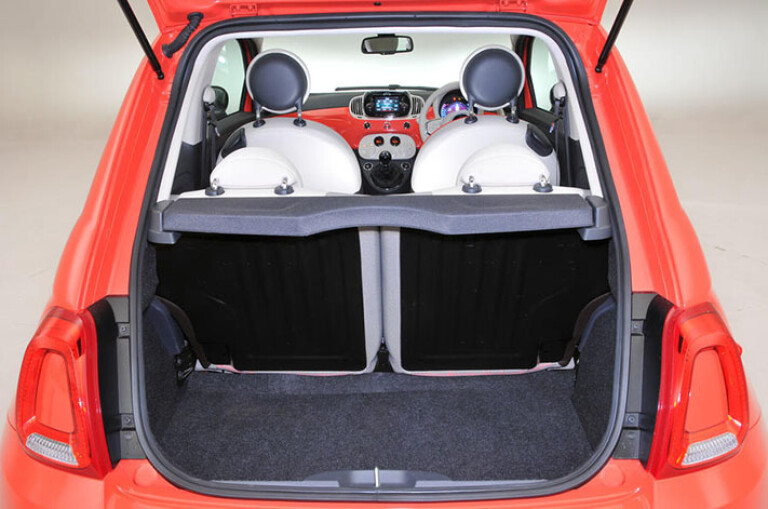
The ancient but beloved Fiat 500’s mostly useless rear seats fold 50:50 – but even with both of them down, you won’t be carrying a lot of suitcases. Overall storage space is about what you’d expect just from an outside view, and even large grocery shops will be a challenge.
Things we like
- On the practicality front, not much at all.
- Think of it as a 2-seater and the boot's suddenly much more useful
Not so much
- Tiny style-focused car means a tiny boot
- With the rear seats up, even groceries will be a tight fit
Light hatches
Volkswagen Polo – 351 / 1125 litres
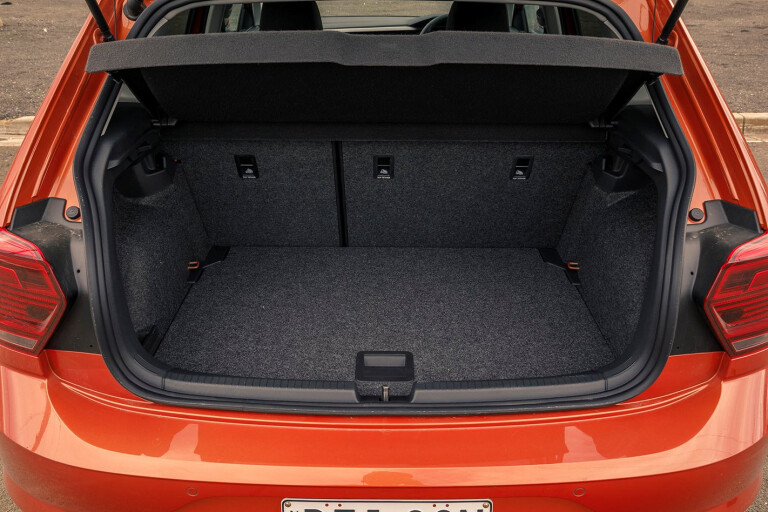
The increased dimensions of the latest-gen car also apply to the boot space, which grew to 351 litres. Folding the rear seats down increases capacity up to 1125 litres, and accommodates objects up to 1.38 metres long.
Things we like
- New model's a lot bigger, with 351 litres of seats-up space
- 1125 litres with seats folded is super handy
- Flush floor is great, as is the space you gain if you take it out
- Big boot doesn't hurt rear-seat space much
Not so much
- Somehow, nothing. It's mega practical. Kudos to VW for this one. 👍
- Got a Polo boot-space complaint? Tell us in the comments!
Kia Rio – 300 / 1078 litres
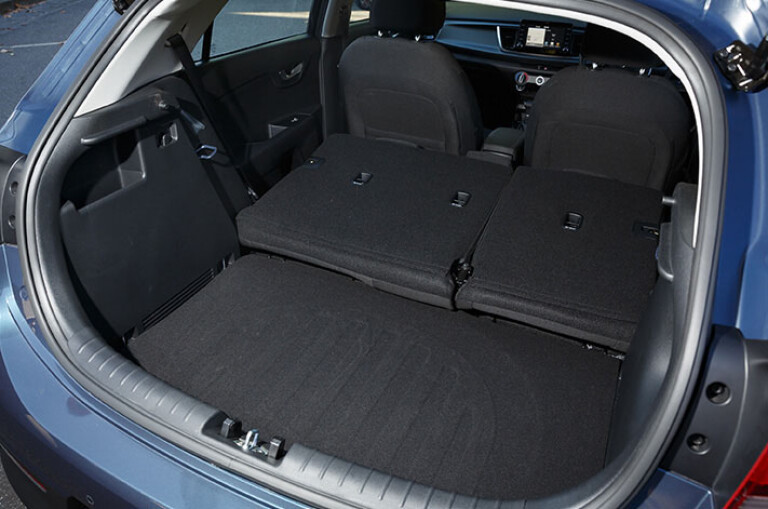
The Rio’s boot holds a lot of cargo for a car of this size, and more than the previous Rio offered. Fold down the 60:40 split rear seats and cargo volume increases to 1078 litres loaded to the roof.
Things we like
- Like the class-leading Polo, there's a lot of room in the Rio's boot
Not so much
- Not a flat floor, yet still only a spacesaver beneath
Toyota Yaris – 270 litres
.jpg)
The new Yaris’ boot capacity is less than the outgoing model's but still more than the Toyota Corolla. The rear seats fold in a 60:40 split to carry bigger loads.
Things we like
- Tiny boot somehow bigger than the Corolla's boot
- 60:40 seats fold almost flat to the floor
- False floor is flush with the boot lip for easy loading, with extra space beneath
Not so much
- Little car means a little boot. Toyota would prefer you buy the Yaris Cross if practicality counts.
Mazda 2 – 250 litres

Mazdas typically aren't the most capacious options out there. The 60:40 rear backrests of the Mazda 2 fold down to carry more, but they don’t fold flat. Additionally, the high boot lip and aperture isn't the most load-friendly. If you like the Mazda 2 but want to carry more, the sedan version holds a decent 440 litres.
Things we like
- A vote for the SEDAN: its boot holds 440 litres
Not so much
- One of the smallest boots in the segment
- Rear seats fold, but not flat
- High boot lip, small overall opening
Suzuki Swift – 242 litres
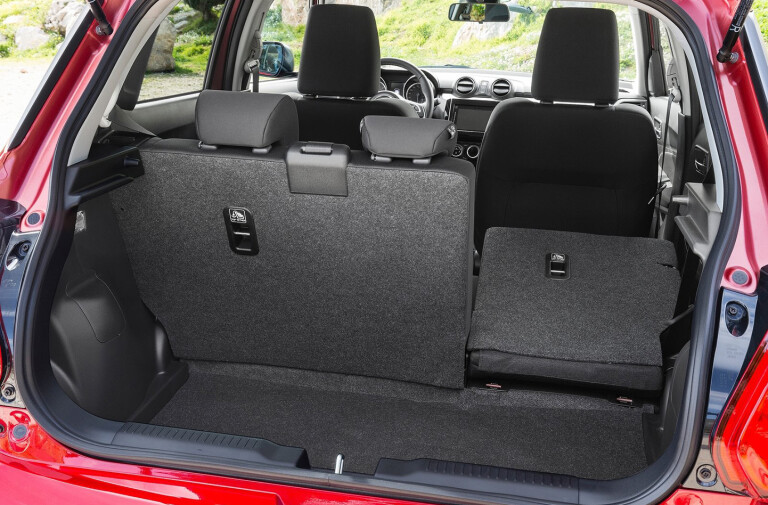
The boot on the Swift is bigger than on the car it replaced, but is still on the small size for a light hatchback. The rear seats on the Swift fold 60:40, which adds flexibility for carrying long objects, but they do not fold flat with the boot floor.
Not so much
- As with the Mazda2, it's a tiny boot this one
- Rear seats fold, but not flat
Small hatches
Small hatches, one step up from the popular 'light hatch' class, are a common go-to for those seeking space inside while still claiming a little footprint on the road.
Kia Cerato – 428 litres
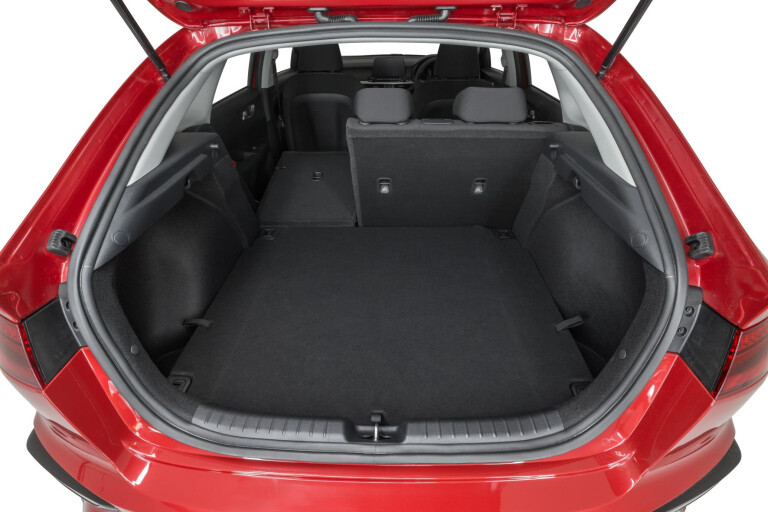
With the 60/40 split-fold rear seats folded down, the Cerato hatchback can hold up to 741 litres, with the space long enough to take a bicycle. Even with the back seats up, 428 litres is remarkably spacious.
Things we like
- Huge boot is super useful
- Handy flat floor helps with loading/unloading
Not so much
- No seats-down capacity claimed
Hyundai i30 – 395 litres

The i30's boot is a generous 395 litres. The rear seats can be folded 60:40, and you can adjust the height of the boot floor with a false floor pull-out. At its lower setting, capacity is maximised, but there is a large step up to the rear of folded seatbacks. Raising the floor gives you a flatter extended-load space.
Things we like
- Height-adjustable false floor
Not so much
- No seats-down capacity claimed
- Seats don't fold flat to the floor
VW Golf 8 – 374 / 1230 litres

One of our faves for overall practically. The Golf’s boot space rises to 1230 litres if you fold down the 60:40 rear split seats. There are hooks in the boot for tying down your load, and a ski port beneath the centre armrest. The boot floor height can be adjusted, with the taller setting easing loading and unloading, while the lower lets you get more stuff in.
Things we like
- Not the biggest boot, but among the most useful
- Handy built-in ski port
- Height-adjustable false floor
Not so much
- Very little. Disagree? Tell us in the comments!
Subaru Impreza – 345 / 795 litres
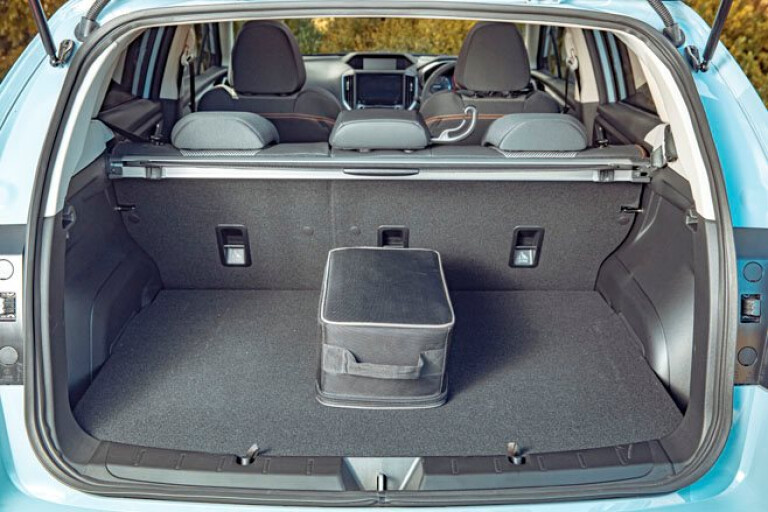
Boot space in the Impreza is about the same as in the previous model, but the opening is slightly wider than before. Seats split-fold 60-40 for extending the load space.
Subaru has yet to confirm dimensions for the incoming new Impreza, but with a 5mm-longer wheelbase, it will likely have a similar boot size (if more hasn't simply been given over to rear legroom).
Things we like
- Overall good boot space
- 100mm-wider boot opening helps with loading
Not so much
- Very little. Disagree? Tell us in the comments!
Mazda 3 – 295 litres

The boot in the new Mazda 3 hatch is a relatively small 295 litres, which is below average for a hatch and 13 litres smaller than the previous model. It’s helped by 60/40 split-folding seats and a broad tailgate opening.
Things we like
- Good-sized opening helps with bigger items
- Rear seats folder close to flat with the floor
Not so much
- Very small boot for a once practical hatch, despite having a spacesaver spare
Toyota Corolla – 217 litres
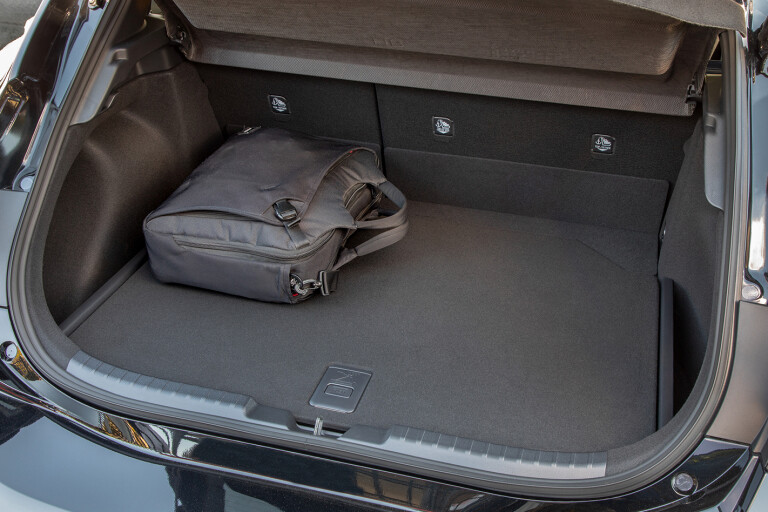
Opening the Corolla's lightweight plastic hatch reveals a tiny boot measuring just 217 litres in all but the ZR Hybrid top-spec. That’s 54 litres less boot space than the smaller Toyota Yaris! The ZR Hybrid’s boot holds 333 litres because it is equipped with a puncture repair kit that does away with the bulky spare wheel under the floor.
Things we like
- Not much...
- The ZR Hybrid boosts space to 333L, but at the expense of a spare wheel
Not so much
- What exactly does the Corolla represent now? It sure isn't practicality...
Style vs practicality... pick one?
As you can see, the practicality of boot space in small hatchbacks can vary significantly, depending on the specific model and its design.
Some small hatchbacks may have limited boot space, making them less practical – but often more stylish, which can be appealing for those who want four passenger doors and a hatch design, but need to carry little more than a gym bag or the groceries.
And even with that tapered sporty roofline, the models with the smallest boots can still be handy if you're carrying a load but no rear passengers.
It's important to carefully consider the amount of boot space that a small hatchback offers before making a purchase, as it can greatly impact the vehicle's overall usefulness and convenience.
Hatchback boot spaces compared
| Model | Boot space (rear seats up) | Boot (rear seats down) |
|---|---|---|
| MICRO HATCHES | ||
| Kia Picanto | 255L | 1010L |
| Fiat 500 | 185L | not listed |
| LIGHT HATCHES | ||
| VW Polo | 351L | 1125L |
| Kia Rio | 300L | 1078L |
| Toyota Yaris | 270L | not listed |
| Mazda 2 | 250L | not listed |
| Suzuki Swift | 242L | 556L |
| SMALL HATCHES | ||
| Kia Cerato | 428L | not listed |
| Hyundai i30 | 395L | 1301L |
| VW Golf Mk8 | 374L | 1230L |
| Subaru Impreza | 345L | not listed (795L on RedBook) |
| Mazda 3 | 295L | not listed |
| Toyota Corolla | 217L | not listed |
Tom Fraser contributed to this story
COMMENTS